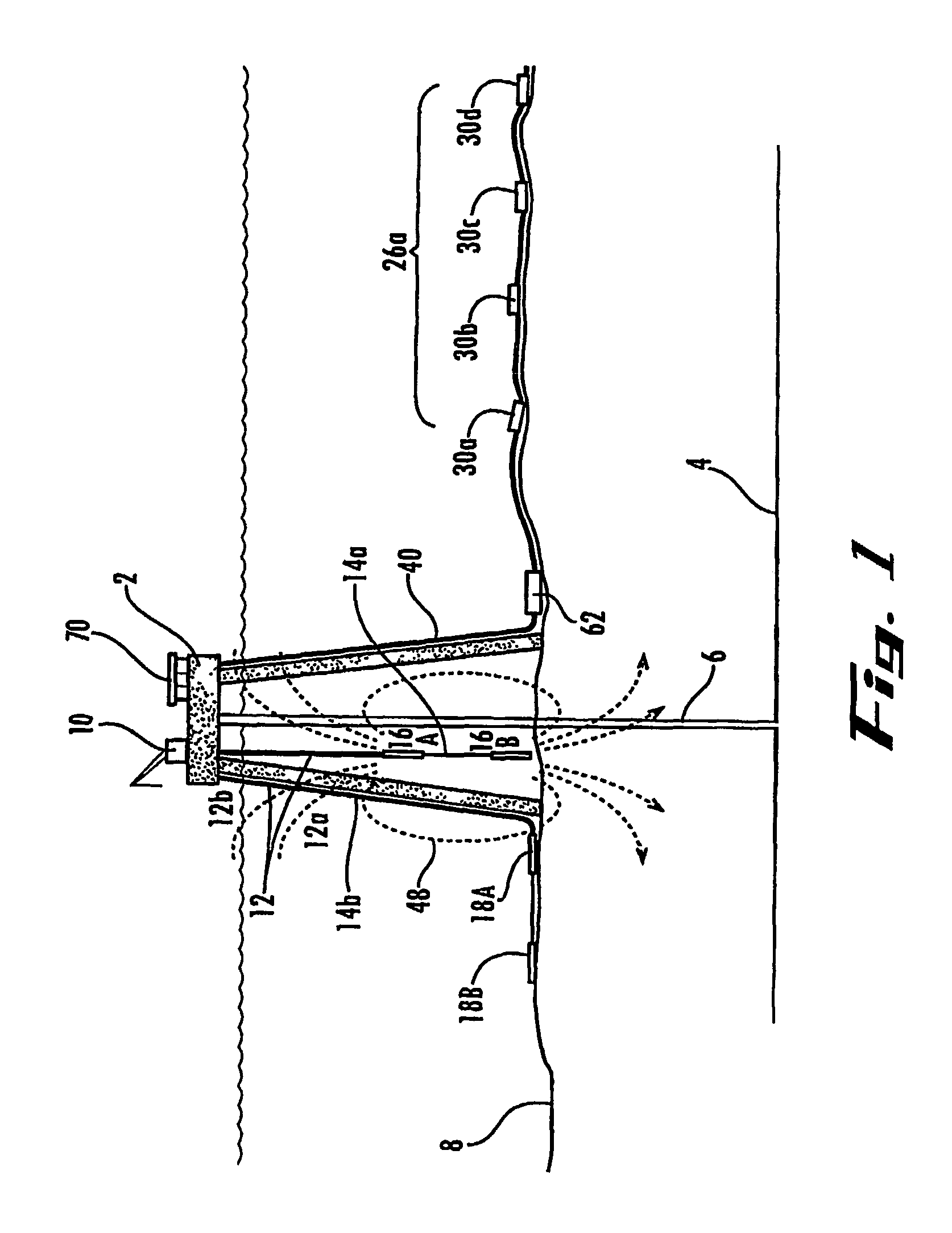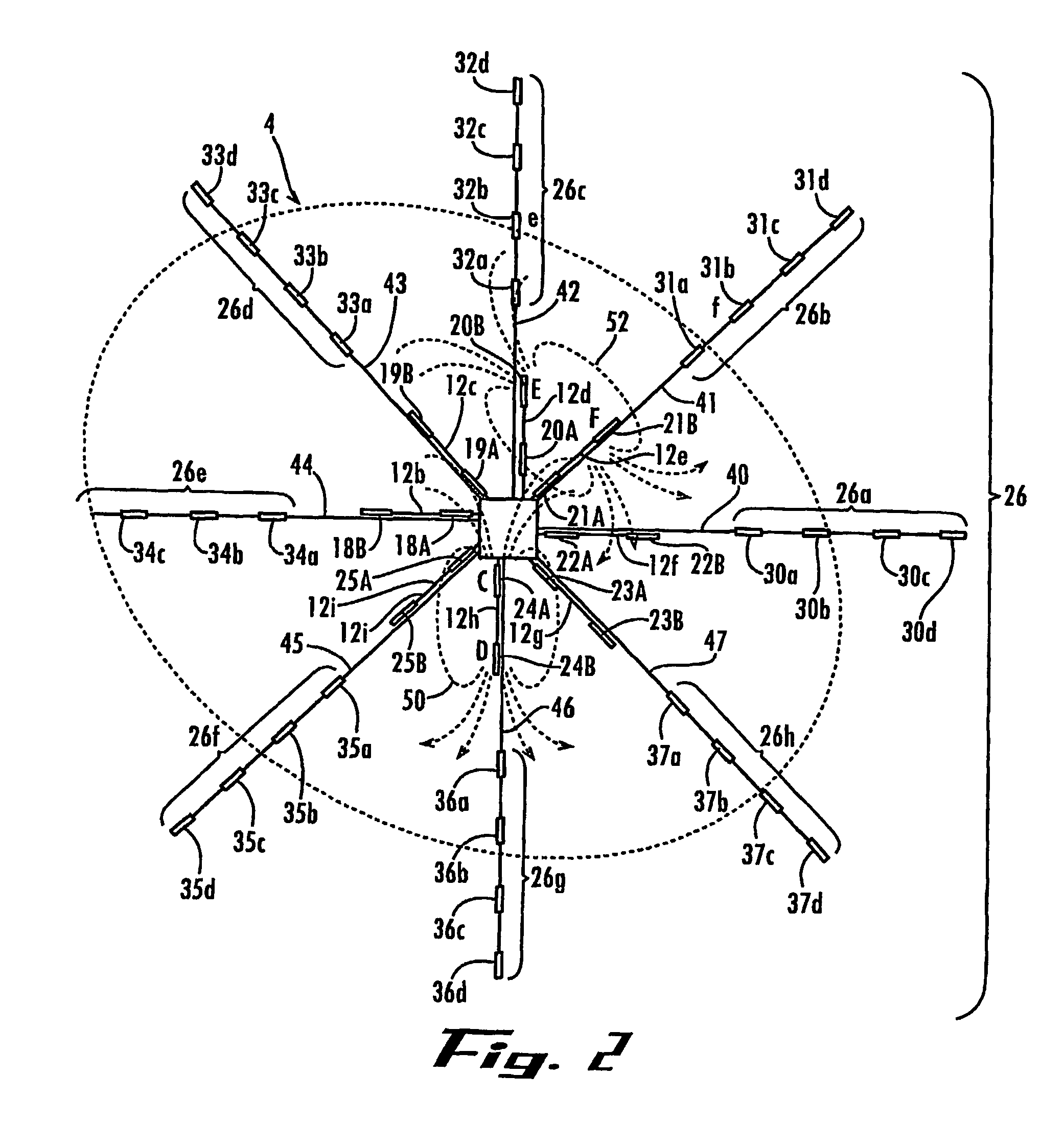System and method for hydrocarbon reservoir monitoring using controlled-source electromagnetic fields
a technology of electromagnetic field and hydrocarbon reservoir, which is applied in the field of system and method for monitoring hydrocarbon reservoirs using controlled source electromagnetic field, can solve the problems of inability to provide a comprehensive image of reservoir geometry, inability to carry out continuous or repeated seismic surveying, and inability to extend monitoring applications. the effect of extending the monitoring application
- Summary
- Abstract
- Description
- Claims
- Application Information
AI Technical Summary
Benefits of technology
Problems solved by technology
Method used
Image
Examples
third embodiment
[0044]In the receiver configuration, permanent anchors can be installed at positions across the seafloor over the reservoir area, for example, in a configuration similar to that shown in FIG. 3. These permanent anchors are used to hold a plurality of removable receiver antennae in place. The receiver antennae can be repeatedly placed at the anchor sites using remotely-operated vehicles (ROVs), as are known in the art, just prior to placement of the towed transmitter into the water. Under this embodiment, no electronic equipment needs to be left at the site between measurement operations.
[0045]Selection of the optimum transmission frequency maximizes the ability to detect changes in the hydrocarbon reservoir thickness using the resistivity data obtained from electric fields remote from the transmitter. This optimum frequency is determined by the water depth, depth of the reservoir, electrical resistivity of the sediments over the reservoir, and the noise floor of the measuring system...
first embodiment
[0049]For a fixed installation transmission can be continuous, with a tradeoff between temporal resolution and noise floor. By stacking measurements over one day, a noise floor of 3×10−8 V / m / (Am) is obtained. This can be lowered to 1×10−18 V / m / (Am) with a one-week measurement. By summing measurements over one year, a noise floor of 10−19 V / m / (Am) can be approached. This probably represents the smallest measurement that can be made in practice.
second embodiment
[0050]For a repeat survey using deployed receivers and a ship-towed transmitter as in the second embodiment, bandwidths of a few minutes are possible before the transmitter location has changed significantly. Using 2 minutes and the above typical parameters, one gets a noise floor of 10−5 V / m / (Am).
[0051]FIG. 6b is a grayscale pixelplot illustrating sensitivity using the ratio of the horizontal, radial electric fields with the reservoir in the model shown in FIG. 6a to the electric fields for a fully depleted reservoir and the base model. The greyscale key to the right of the plot indicates the amplitude of the noise floor Nf.
[0052]The contour lines in FIG. 6b show the magnitude of the electric field with the reservoir present, in exponent form. That is, −20 is 10−20 V / m per dipole moment. First, one chooses a source-receiver range. This should be made as large as possible, but is limited by the reservoir size and the resolution desired. Here, 5 km (indicated by arrow “A”) is selecte...
PUM
 Login to View More
Login to View More Abstract
Description
Claims
Application Information
 Login to View More
Login to View More - R&D
- Intellectual Property
- Life Sciences
- Materials
- Tech Scout
- Unparalleled Data Quality
- Higher Quality Content
- 60% Fewer Hallucinations
Browse by: Latest US Patents, China's latest patents, Technical Efficacy Thesaurus, Application Domain, Technology Topic, Popular Technical Reports.
© 2025 PatSnap. All rights reserved.Legal|Privacy policy|Modern Slavery Act Transparency Statement|Sitemap|About US| Contact US: help@patsnap.com



